Exercises And Yoga For Flat Feet:
Jump To:
There are flat feet exercises for foot muscle strengthening which can help mitigate the impact of flat feet. The absence of an arch in the feet causing the soles to touch the ground is called flat feet. An old term for flat feet is fallen arches.
Flat feet are more common than most of us would imagine. Also known as pes planus or the condition of fallen arches, a number of people may experience pain or suffer overuse injuries.
It is said that children with flat feet are usually slower when they run, as compared to their counterparts, and their natural jumping mechanism might not be as efficient. Eventually, people with flat feet run a high risk of early joint degeneration or early onset of arthritis. This might happen even in the 30s.
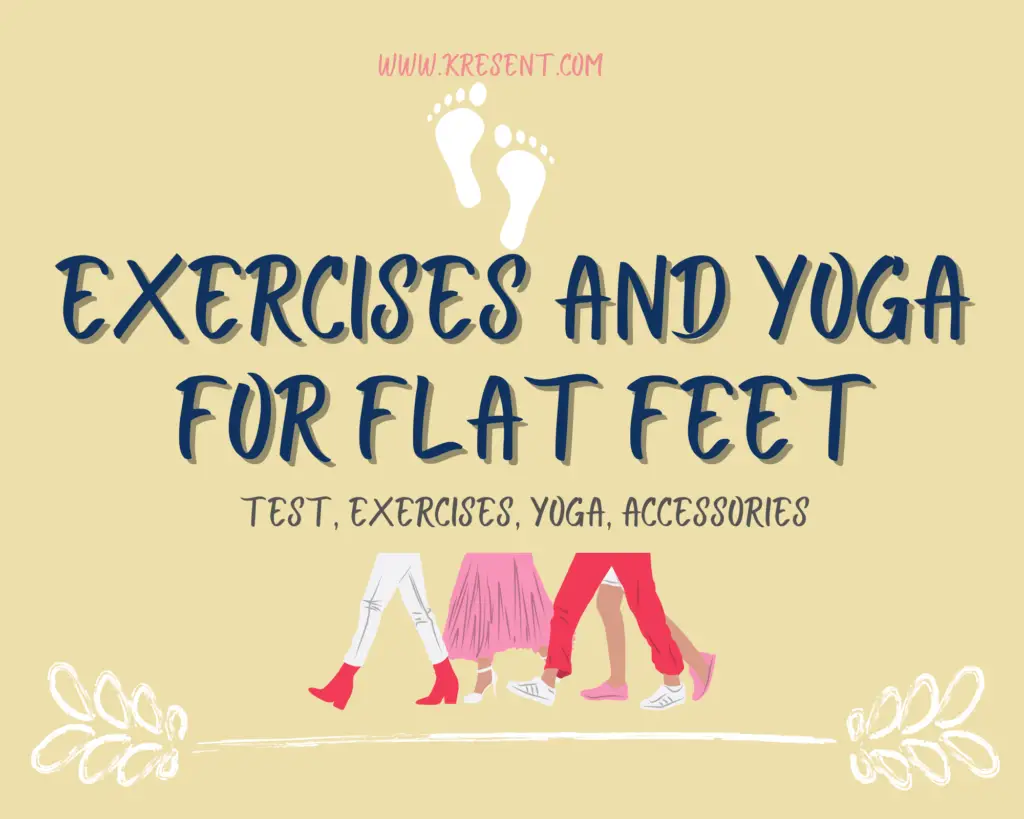
The development of the arch usually starts at 7 or 8 years of age. Sometimes, it is difficult to figure out whether your child really does have flat feet.
A simple test to find out whether your child has rigid or flexible flat feet is to make her stand on her toes. If an arch develops, the child has flexible flat feet, and is most likely to be problem-free (since it may disappear over time).
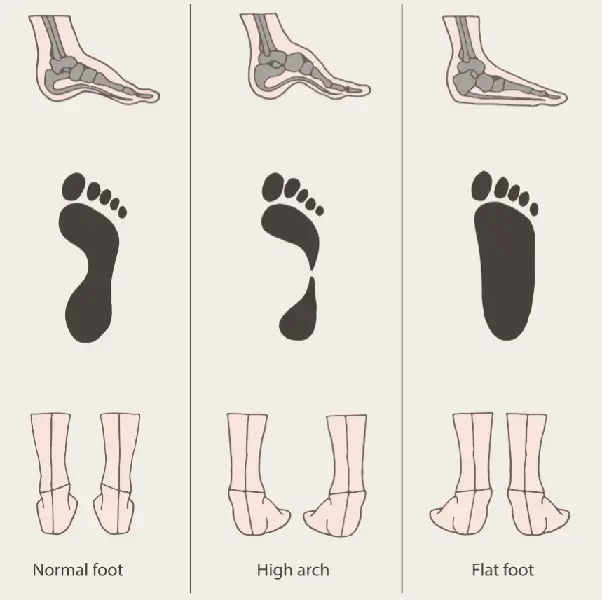
However, a small subset will have rigid flat feet. These children may be prone to frequent ankle sprains, aches, and tiredness in the feet. Such children must be closely examined for any underlying condition such as tarsal coalition (a bone connection problem) or neurological or muscular disorders.
Flat Feet Exercises:
Here are some flat feet exercises that may help to strengthen the muscles that support the foot.
Calf Stretch:
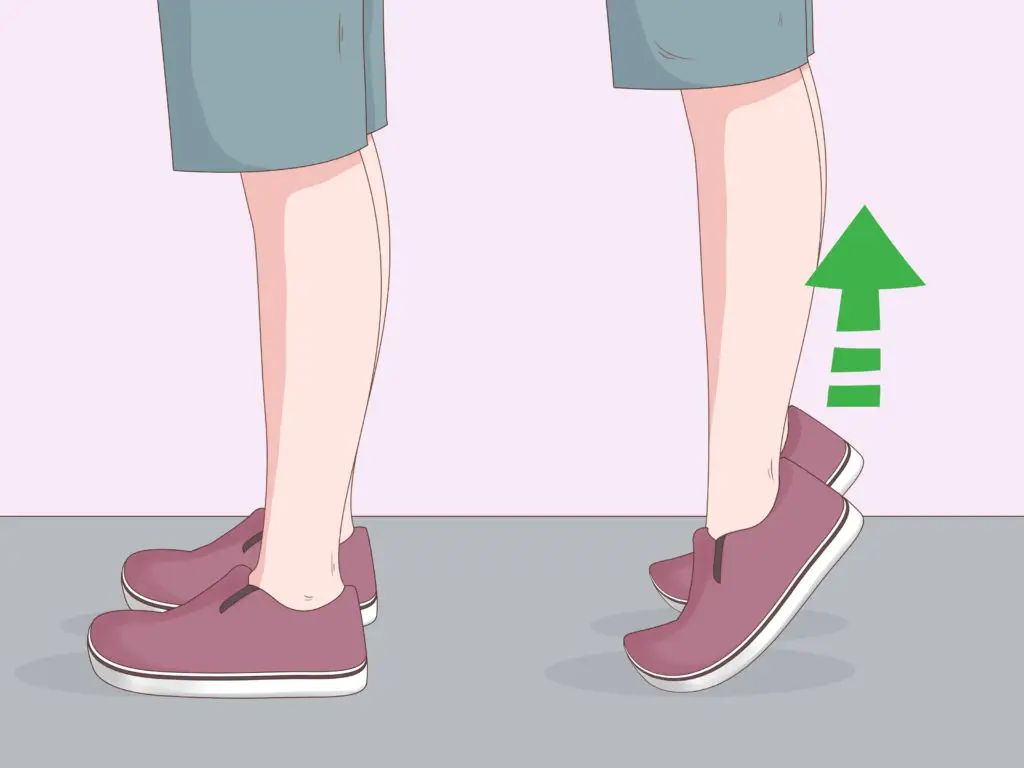
- Stand with your feet hip-width apart. Slowly lift your body up on to your toes, and hold for a few seconds.
- Now slowly lower yourself back to start and repeat the exercise 3-5 times daily.
Caution: Hold the position only as long as it’s comfortable. Do not stretch your feet too hard, especially when you are beginning to exercise.
Do not stretch your feet too hard, especially when you are beginning to exercise.
Gastrocnemius Strengthening:
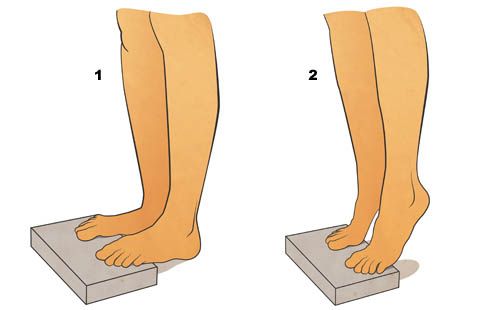
- Stand on the edge of a step, with the balls of your feet resting on the edge.
- Now, lower both your heels towards the lower step, so as to feel a slight stretch in your gastrocnemius, the muscle at the back of the lower part of your leg.
- Hold this stretch for at least 30 seconds; repeat thrice, daily.
Caution: Always use support — a railing or a wall — so you don’t lose balance.
Heel Chord Strengthening:
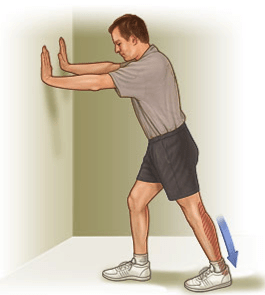
- Stand to face a wall and place your hands on the wall for support.
- Stand on your toes, and balance yourself. Now, turn your feet slightly towards the left (while still on your toes) and come back to position.
- Repeat towards the right side.
Caution: Begin by performing this stretch once or twice on both sides, and only gradually increase the duration and number of times you perform the exercise.
Toe Curls:
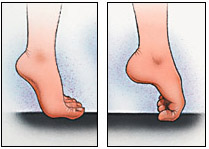
- Sit on a chair with a towel under your foot. Stretch your toes, followed by a curling movement to pull the towel towards you.
- All this time, your heel must be firmly placed on the ground.
- Repeat 3-5 times for both feet.
- Once you have mastered this, start placing low weights (200 gm to begin with) on the towels to further boost the strength of your toes.
Caution: Don’t load the towel with too much weight; make it a gradual process.
Yoga Asanas For Flat Foot | Yoga For Flat Feet:
Yoga for flat feet focuses on practices to stand properly and evenly on both feet. The practice starts from Tadasana (mountain pose), which is all about fixing from the root.
Standing postures are important as they work on the feet first. Seated and reclining postures help to work on the feet to retain the arch. In fact, one should always remember to stretch the sole of the feet while practicing every posture in these flat feet exercises.
1. Tadasana (Standing Pose):
This yoga for flat feet pose stretches the whole foot, especially the arch. It engages the thighs, activates the calf muscles, and strengthens the knees.
It stretches and lengthens all the long muscles of the body, while also opening the spinal, shoulder, and hip joints.
This pose strengthens the muscles of the neck, lower back, abdomen, and pelvis. Lung capacity increases and the respiratory muscles become firmer. Regular practice of this asana not only strengthens the body but also makes it flexible.
Tadasana looks like simple standing but there is a particular way to set every part of the body in the asana. Let’s get into the detailed steps of tadasana.
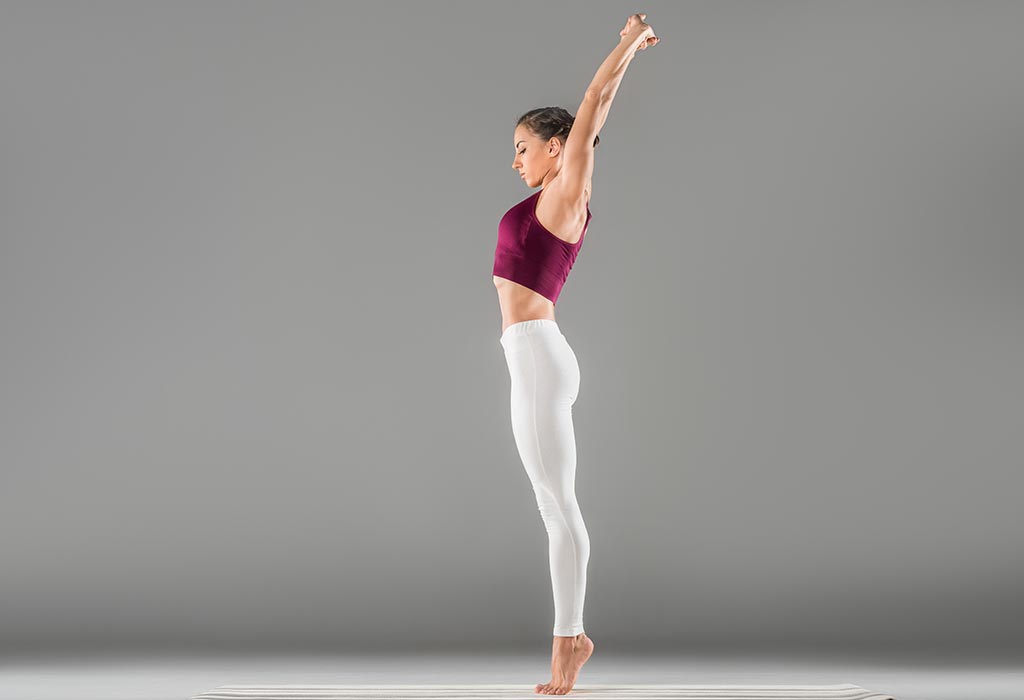
Tadasana Steps:
At first, practice the tadasana, standing against the wall to maintain the correct posture, with hips towards the wall and the ankles a few inches away from it.
- Stand with the feet hip distance apart grounding the feet. Lift the energy from the ground up towards the torso.
- Gently extend the spine maintaining a natural curve, by tucking the tailbone down towards the earth and the pelvis in towards the body.
- Roll the shoulders up towards the ears and drop them down towards the hips. Focus on the breath.
- Inhale; raise the arms up towards the sides, with the shoulders touching the wall, and the palms facing forwards, stretching and extending the torso.
- Exhale; bring the arms down. Repeat 5 to 10 times; relax.
- Inhale; raise both the arms up towards the ceiling with the palms parallel, make sure the shoulders are pressing down towards the hips.
- Exhale; bring the arms down towards the body. Repeat 5 to 10 times; relax.
2. Adho Mukha Svanasana (Downward Facing Dog Pose):
This yoga for flat feet gives a good stretch in gastrocnemius. It also calms the mind, lengthens the spine, and energizes the body.
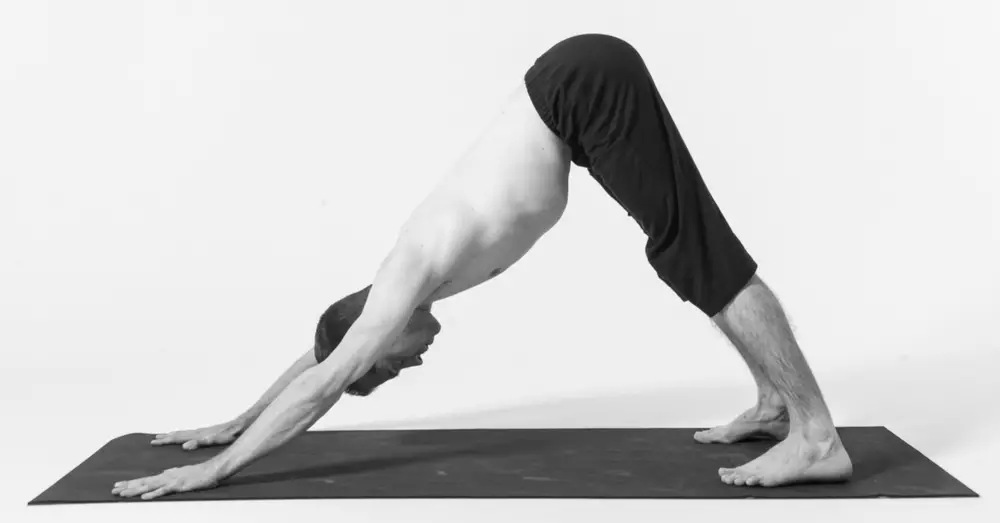
Adho Mukha Svanasana Steps:
- Stand on your four limbs like a table with palms placed shoulder-width apart and toes placed hip-width apart parallelly.
- Exhale; lift the knees off the floor, legs straight, and form an inverted V-shape pushing the body weight into the palms and hips up towards the ceiling.
- Keep neck neutral and body weight evenly distributed. Touch the ears to the inner arms and sink your hands into the ground.
- Stay in this position and take deep breaths.
Release the pose get back to the table pose bending your knees while exhaling.
3. Baddha Konasana (Bound Angle Pose):
This yoga for flat feet stretches the entire inner line of the leg muscles to the feet. Also, Baddha Konasana is a classic pose in the asana practice as it benefits the entire body. Apart from being an excellent hip opener, it stimulates the abdominal organs, the ovaries, and kidneys. It stimulates the heart and improves circulation.
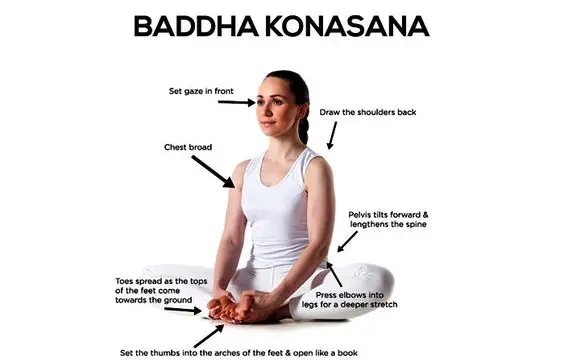
Baddha Konasana (Bound Angle Pose) Steps:
- Sit with your legs straight in front of you. Lift the hips a bit off the floor and place a cushion under them.
- Inhale; bend the legs towards the chest. Exhale; drop the right knee to the right and the left knee to the left and allow the souls to touch each other. Place the palms on the floor behind the hips and extend the spine by pressing on the palms.
- Hold this pose, breathing deeply for 10 breaths.
- Inhale; lift the palms and reach forward to hold the toes or the feet with both your hands.
- Exhale; bend the elbows onto the thighs and press them down towards the floor, feeling a stretch on the hips and the thighs. If the knees don’t touch the floor, do not force them as this is due to tight hips. Place a block or bolster under the knees to support them.
- Hold this pose for a few breaths; release.
4. Vrksasana (Tree Pose):
Vrksasana is a standing yoga pose in a tree pose. You have to balance the body on the single leg in this asana. This yoga for flat feet pose
Regular practice will slowly reveal what you are capable of becoming. A tree draws stability from its roots, allowing the trunk and branches to sustain through strong winds and rain. Similarly, we can learn to weather the storms in our lives by focussing our minds on the reserve of strength and peace from deep within us.
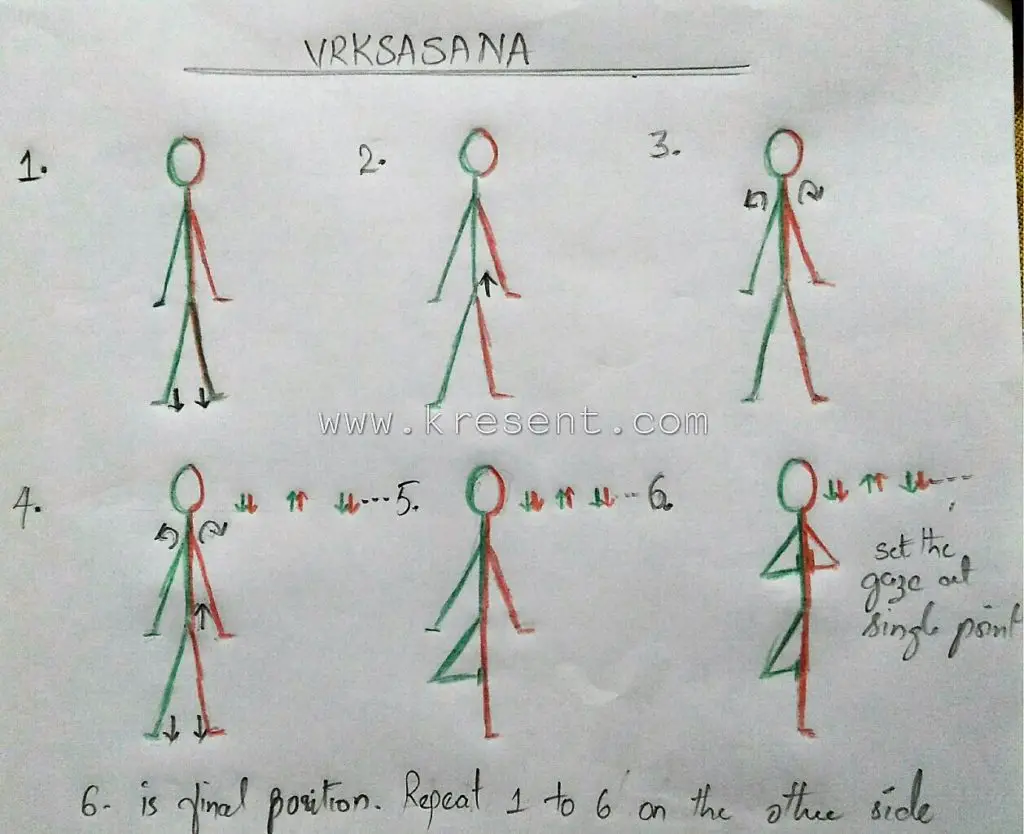
Vrksasana Steps:
- Stand up on your feet ground to the floor.
- Tuck the tailbone down towards the earth and pelvis towards the body like an extension through the spine.
- Roll the shoulder back and drop back towards the hips.
- Focus on the breath.
- Shift all the body weight to the left leg and lift the right bending the knee and place the foot on the crook of the left inner thigh (or a little lower to the crook).
- Join the palms in the Namaste position and place them on the waist.
- Set the gaze at a point and focus on the breath. Gradually increase to 10 breaths.
- Repeat the same on the other side.
Insoles For Flat Feet:
Along with exercises and yoga for flat feet, you can use accessories like insoles for immediate relief. Some with flat feet may also have shortened Achilles tendons. Observing the feet and stretching the legs while standing; doing simple movements, such as raising the toes up and down, help stretch this tendon.
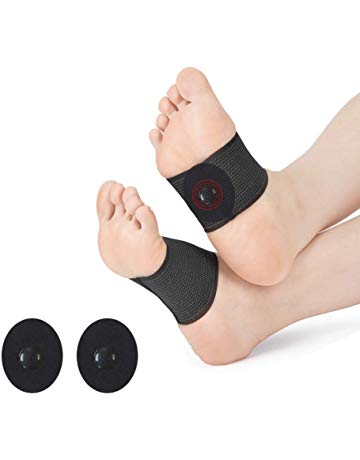
Can flat foot be corrected?
Many people with flat feet don’t have significant problems or need treatment. Your healthcare provider may recommend nonsurgical treatments if you experience foot pain, stiffness, or other issues. Rarely, do people need surgery to fix rigid flat feet or problems with bones or tendons.
Is it bad to have flat feet?
Flatfeet can sometimes contribute to problems in your ankles and knees because the condition can alter the alignment of your legs. If you aren’t having pain, no treatment is usually necessary for flatfeet.
How can I naturally fix my flat feet?
Practice yoga, rest, try arch sports, talk to a qualified doctor, and lose some extra kilos. These are some of the ways to naturally fix your flat feet.
Does walking barefoot cause flat feet?
Walking barefoot on hard surfaces for an extended amount of time is bad for your feet because it allows the foot to collapse, which can lead to a tremendous amount of stress not only for the foot but also for the rest of the body.
Is flat feet permanent?
In adults, flat feet usually remain permanently flat. Treatment usually addresses the symptoms rather than a cure. In adults, the condition is called “acquired” flatfoot because it affects feet that at one point in time had a normal longitudinal arch. The deformity may worsen over time as one age.
Is Flat Foot a disability?
Pes planus is a disability characterized by the arches of your feet flattening. While the disability can be serious, inhibiting your range of motion and ability to walk, it is typically painless.
Can yoga fix flat feet?
Yoga, with its repertoire of asanas that strengthen the calf muscles, heel, or the arch area, may improve foot structure and function in people with flat feet. Alternatively, in some cases, it may even strengthen the feet by increasing the foot arch.
Can you fix flat feet naturally?
Arch supports won’t cure flatfeet, but they often reduce symptoms. Stretching exercises. Some people with flatfeet also have a shortened Achilles tendon. Exercises to stretch this tendon may help.
What is the fastest way to cure flat feet?
Which exercise is best for flat foot?
Also known as “foot doming,” arch lifts involve keeping your feet flat on the floor and raising the arch of your foot as much as you can, rolling the weight of your foot to the outside while keeping your heel and toes on the ground. You can perform the exercise either standing or sitting.
Is walking barefoot good for flat feet?
For those who have flat feet, running barefoot may help strengthen muscles in your arch and ankles. Those who do a lot of physical activity or run often may experience their flat feet lacking pronation when the arch compresses to help with shock absorption as force exerts on the feet.
Is flat footed a disability?
Pes planus is a disability characterized by the arches of your feet flattening. While the disability can be serious, inhibiting your range of motion and ability to walk, it is typically painless.
How can I improve my foot arch?
Stair arch raises Use your left foot for balance as you lower your right foot down so your heel hangs lower than the step. Slowly lift your right heel as high as you can, focusing on strengthening your arch. Rotate your arch inward as your knee and calf rotate slightly to the side, causing your arch to become higher.
How long does it take to correct flat feet?
Structural correction of flat feet can take between 3-18 months. Not all flat feet cases can be corrected, however many can be.
Does flat feet make you slower?
Are the rumors true that being flat-footed actually makes you slower, and if so, what can I do to fix this? A: Dear Low Arches, It is not true that people can’t run fast and well because of flat feet.
Why does the Army reject flat feet?
Army personnel has to go through a rigorous physical regimen. A person with flat feet will not be able to cope with such activities. If the foot arch is not fully developed it will not act as a shock absorber, instead, shock will be absorbed by the spine. This can cause problems in the back.
Why flat feet is not allowed in military?
Why was flat feet a disqualifying condition? In 1948, the Army adopted an articulated policy that disqualified men with flat feet from military service. The reason: the Army believed that flat feet would make soldiers footsore, would not be able to perform physical labor, and would be prone to fatigue.
Can you run with flat feet?
Flat feet can cause a variety of symptoms like pain and discomfort in your feet, and pain in the knees, hips, and back. Your posture can change and you may feel that walking and running are difficult for you. You can be a successful and an injury-free runner even with your flat feet.
What are the disadvantages of flat feet?
Some issues caused by flat feet include Inflammation of soft tissue. Foot, arch, and leg fatigue. Heel, foot, and ankle pain. Knee, hip, and lower back pain. Rolled-in ankles. Abnormal walking patterns. Shin splints. Bunions.
Is flat feet genetic?
The causes of flat feet are varied. Some inherit the condition from their parents as an isolated trait, this is particularly true for children with hypermobility or “double jointed”. Others develop flat feet as part of another genetic condition. Still, others develop the condition over time.
How do people with flat feet live?
things you can do to make living with flat feet more manageable.
- Wear supportive shoes, with proper arch support and stability.
- Strengthen your arches with appropriate exercises.
- Wear insoles or custom-made orthotics.
